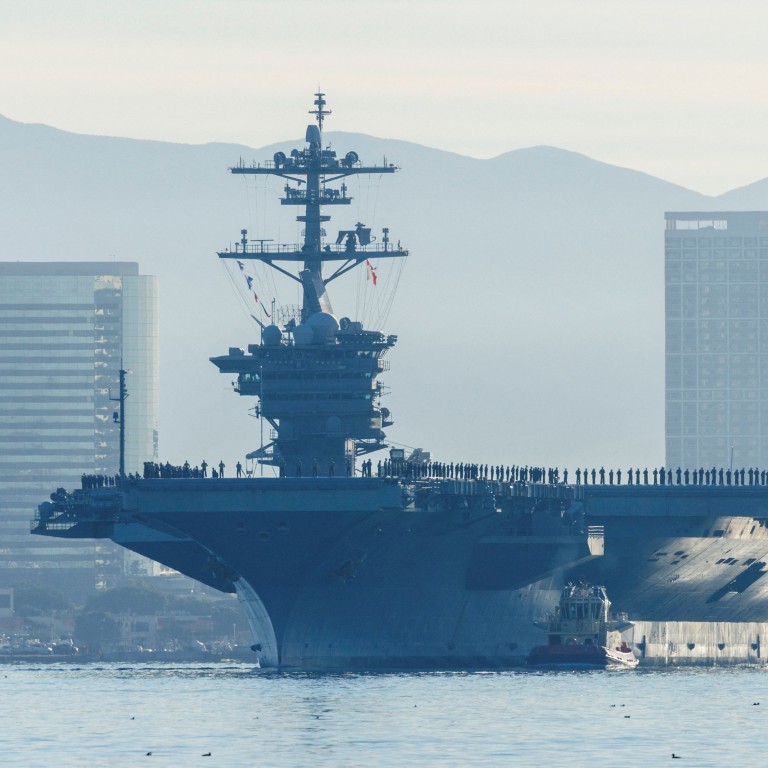
Amid North Korea’s sabre-rattling, US aircraft carrier enters Sea of Japan off Korean peninsula
- The USS Abraham Lincoln strike group will stay in waters off the Korean peninsula for about five days
- Its entry comes ahead of joint US-South Korean military exercises focusing on computerised war games
The US Naval Institute’s USNI News Fleet and Marine Tracker shows the Abraham Lincoln carrier strike group is in the Sea of Japan.
The USS Abraham Lincoln strike group will stay in waters off the Korean peninsula for about five days.
How North Korea duped the world about its ‘big new’ ICBM
It is the first time a US navy aircraft carrier has entered the waters since November 2017, Yonhap news agency said, citing military sources. At the time, three US aircraft carrier strike groups entered the waters in the Sea of Japan to conduct a joint naval exercise with South Korean navy, after the North carried out nuclear and intercontinental ballistic missile (ICBM) tests.
Sung Kim, the US special representative for North Korea, said last week that Pyongyang could conduct a missile or nuclear test to mark the 110th anniversary of the birth of its founding leader Kim Il-sung that falls on Friday.
The North will also observe the 90th founding anniversary of the North Korean People’s Revolutionary Army on April 25.
Pyongyang tends to celebrate politically significant anniversaries with military parades and weapons tests.
South Korea turns to US amid warnings of Kim Jong-un’s nuclear test plan
A South Korean defence ministry declined to verify the timetable for the exercises.
South Korea’s navy and the US aircraft strike group have no plans to conduct a separate joint naval drill, but South Korean leaders are likely to get aboard the carrier and send a warning message over the North’s provocative acts, according to Yonhap.
Last month, the US Navy conducted an air demonstration with carrier aircraft on in the Yellow Sea in response to North Korea’s intercontinental ballistic missiles on February 27 and March 5.
The demonstration was carried out in international airspace by military aircraft from the USS Abraham Lincoln aircraft carrier, which was staying off the Philippines, along with regionally-based US Air Force aircraft.
North Korea appears to be continuing restoration work at its Punggye-ri nuclear test site, including the construction of a new tunnel entrance, the Vienna-based Open Nuclear Network said in a recent report.
Commercial satellite imagery taken between March 24 and April 6 indicates continued activity at the site’s Tunnel 3, such as new spoil piles and a newly uncovered entrance, it said.
North Korea likely established a “preliminary entrance to Tunnel 3 and started excavation of the tunnel structure”, read the report by Katsuhisa Furukawa, a former member of the United Nations Panel of Experts on North Korean sanctions.
There are reportedly four tunnels in the Punggye-ri zone, which was formally shut down in 2018 as Pyongyang began attempts for rapprochement with the United States before subsequent denuclearisation talks collapsed the following year.
Of the four tunnels, the North used Tunnel 1 and Tunnel 2 by carrying out nuclear tests there, but it is believed that Tunnels 3 and 4 could be used for tests after restoration work.


